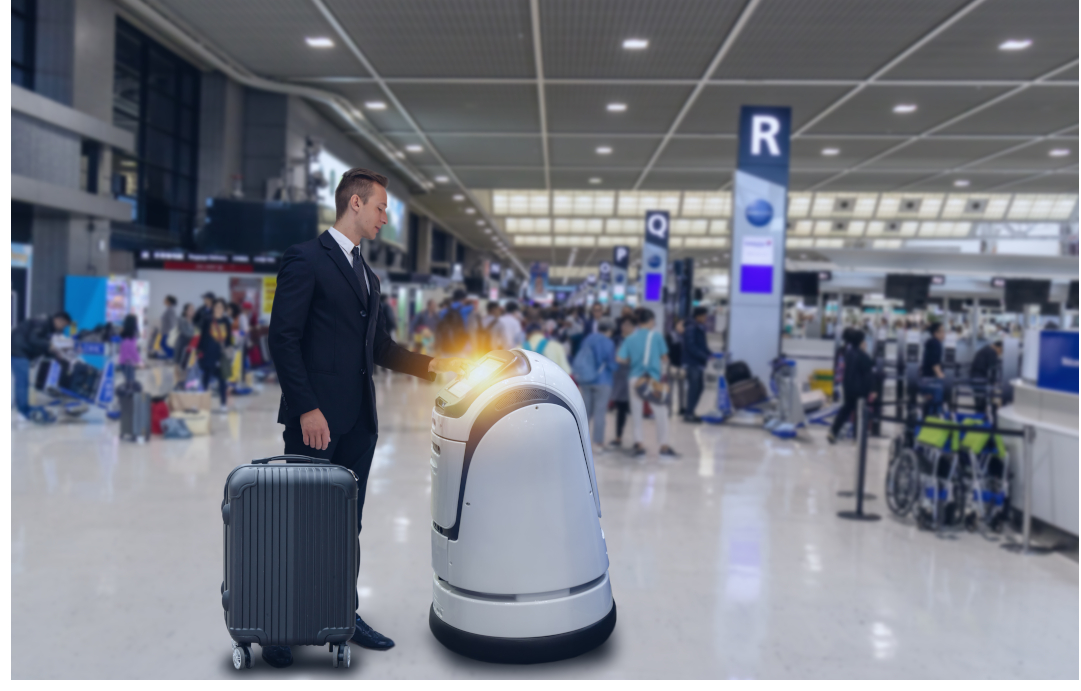Gatwick Airport joins the growing number of aviation businesses making use of chatbots to help guide their huge numbers of customers around those sprawling hallways and to the right gate on time, with a refreshing display of commitment and business smarts.
Last year, London’s second busiest runway at Gatwick Airport was thrown into chaos by unsubstantiated drone sightings, cancelling flights, with armed police swarming the perimeter and chaos in the terminals. After much hunting, there probably was no drone, but it highlights the problem and potential for drone misuse around any airport.
A year later and Gatwick Airport has a drone of its own, a new chatbot called Gail on Facebook Messenger to interact with passengers and visitors. Gail can provide the usual flight information, a range of flight specific notifications like delays and gate changes, plus information about the airport shops, restaurants and other facilities.
Ask her for a burger and she’ll list suitable restaurants, searches for vegan options or all-day breakfasts seem to be rather vague, but there’s plenty of time for her to learn. More importantly, flight information pops up quickly and she can search by light number, time of expected arrival of general terms like “BA to New York”.
Gail is currently limited to handling passenger queries in English for now, but the airport expects other languages to be added next year. Perhaps the best news from the launch is that Gail has her own page on the airport’s contacts list, giving her some prominence and not leaving her buried in a press release that no one will see.
Gatwick also plans to push Gail to other chat platforms including WhatsApp and Apple Business Messenger. All of which sounds like a solid plan for progress and not the usual, let’s wait and see how she does approach.

As part of Gatwick’s £1 billion-plus investment in new technology and infrastructure, AI-enabled Gail is based on experience from Lyon-Saint Exupéry airport’s chatbot that has been running since 2017, another impressive effort in not reinventing the wheel, with many chatbots now in operation, there is rarely a need to start from scratch.
This collaboration helped Gatwick define what the chatbot could be used for, questions passengers might ask and the value of features such as ‘quick response’. From that experience and information, Gatwick also provided some useful lessons gathered so far, that include:
“Quality of conversations – currently, the Gatwick chatbot understands and answers about 80% of the questions it receives and within a year the chatbots of both Lyon-Saint Exupéry and Gatwick are expected to reach a new level of understanding, reaching around 95% by actively learning from interactions with users.
Customer experience – the Gatwick chatbot takes the experience further by integrating restaurants so that passengers looking for somewhere to eat before their flight can use the chatbot to help them find a suitable restaurant. For example – by asking “Which restaurants have vegetarian options?” users will be presented with a list of options. Other chatbots in VINCI Airports’ network are likely to benefit from lessons that .
Multi-channel access – while both the Gatwick and Lyon-Saint Exupéry’s chatbots are available on Facebook Messenger, the Gatwick chatbot will be tested on platforms such as WhatsApp and Apple Business Messenger, while Lyon has focused on web and mobile channels – an approach that will develop further knowledge and best-practice sharing.”
Chatbots and Other Technology in the Air
Most airlines like KLM and recently Lufthansa, and a growing number of airports now operate bots, to speed up customer service and deliver key information. But businesses of any size and in any market are seeing the clear benefits of bots as customer acceptance and usage rises.
Technology is playing an increasingly important role in air travel, with British Airways testing VR as an in-flight entertainment option. Plane builders looking to use large digital screens rather than tiny porthole windows to make the experience more comfortable (unless you’re scared of flying).
Other innovations can be seen around the world with Miami Dade’s airport using an app and Bluetooth beacon technology to provide a personal travel assistant and hyper accurate location services.
But chatbots are the key point of an airline’s or airport’s contact with the customer, from searching and booking flights, to handling the airport experience and offering customer and after care. That can include satisfaction surveys, suggestions for new features and as chatbots become fully-fledged personal assistants, so much more within apps, kiosks and other services.
Any business in any market can build their own chatbots, using services like SnatchBot for a multi-channel approach to getting in touch and helping their customers.
